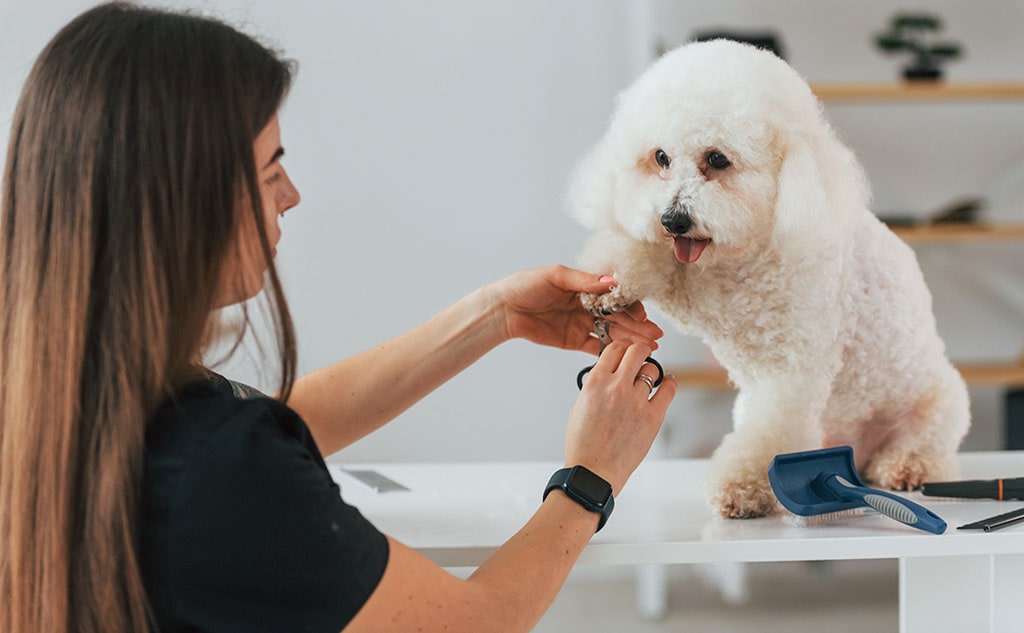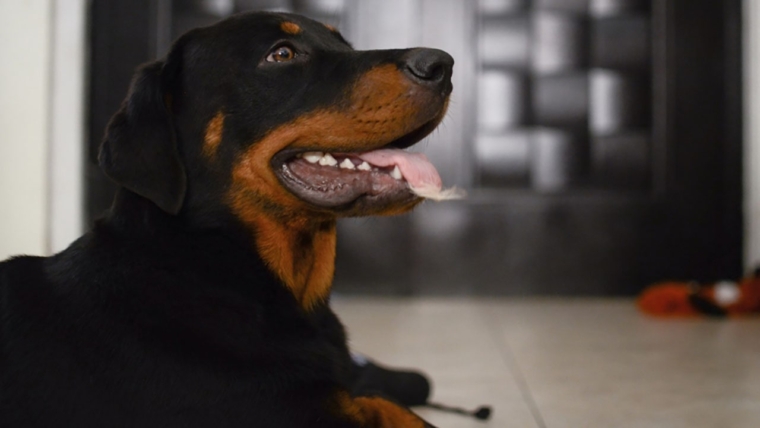
If you’ve ever owned a dog, then chances are you know how much they love to dig and chew. But if your dog has split or broken nails, this can be quite dangerous for their health and safety. Dogs have tough nails that help them dig into the ground for food, but when there’s too much pressure put on these nails during playtime or walking outside in bad weather conditions (like snow), it can cause them to break off entirely or crack open slightly so that water gets inside where it doesn’t belong! This is why we must take care of our dogs’ health so that they stay healthy all year round—even when they play with us at home.
What is a broken dog nail?
A broken nail has split or cracked. This can be painful for your dog and can lead to infection if you don’t take care of it. If the split gets deep enough, your dog may limp because they’re trying to avoid putting pressure on its injured paw.
If you notice that your dog’s nails are cracking or splitting, try giving them some time off from their usual activity level–especially if they’ve been running around in wet grass before coming inside (which makes the ground soft). Also, ensure they have plenty of soft bedding where they can rest comfortably without putting weight on their paws too much at once.
How do I know if my dog has split or broken nails?
The first thing you should do is look for a split or break in the nail. If you see that, then it’s likely that your dog has split nails. You can also check for swelling and redness around the affected area. If there is any pain in their foot, it could be an indication of broken nails as well.
What are the causes of split or broken nails in dogs?
There are many causes of split or broken nails in dogs. Some of these include:
- Too much wear and tear: If your dog runs around and jumps, his nails will wear down quickly. They may become thinner and more prone to splitting or breaking as they do.
- Inadequate nutrition: If you’re feeding your pet a deficient diet, this could lead to poor nail health and other physical issues such as obesity and muscle weakness that can make it difficult for the dog to walk properly (or even stand up).
- Infections by bacteria: Several disorders, including environmental allergies and food allergies, can cause bacterial infections in your dog’s nail beds.
- Nail fungus infections Onychomycosis: the technical word for a fungal infection of the nail, maybe the cause of your dog’s crusty nails. The dermatophyte fungus, or ringworm, is a prevalent cause of canine fungal nail infections.
- Ingrown nails: Dog nails can curl back and injure the paw pad if not trimmed frequently. Ingrown toenails can cause subsequent infections, disability, and walking discomfort.
- Lupoid onychodystrophy: This uncommon inflammatory condition causes aberrant nail development in canines. Symptoms include aberrant nail regrowth, discomfort, lameness, nail shedding, and swollen toes. Any breed can develop lupoid onychodystrophy; however, German Shepherds and Gordon Setters may be particularly susceptible.
How do you treat a split nail on a dog
If your dog’s nail is split, you can use a dog nail clipper to trim the nail. When doing this, you should be careful not to cut into the quick (the pink part) of your dog’s nail. If you accidentally cut into it, use a styptic powder or cornstarch to stop bleeding.
If your dog has very rough edges on their nails after trimming them, you may want to use a file instead of just cutting them off with clippers. This will smooth out those rough areas, so they don’t hurt as much when they hit things like carpeting or floorboards in your house!
If you have an electric grinder at home already (for filing down metal), this tool works great for smoothing down split nails too!
What should I do if my dog’s nail is split?
If your dog’s nail is split, there are a few things you can do to help it heal. First, ensure your dog doesn’t bite or chew on his nails. If he does, this can cause more damage and bleeding that could lead to infection. If possible, keep him from stepping on his paws as well. Also try not to let him run around on rough surfaces like gravel; if he does run outside, put some protective boots on him so that he doesn’t pick up splinters while playing in dirt or grassy areas.
The most important thing is keeping an eye out for signs of infection: swelling around the area where blood vessels were damaged by breaking through the skin during contact with hard objects like rocks; redness surrounding broken skin; pus coming out from underneath split ends–these all indicate infection and should be treated immediately by visiting a veterinarian who specializes in animals.
How Can You Protect Your Dog’s Nails’ Health?
You can help keep your dog’s nails healthy by feeding them a good diet and giving them plenty of exercises. If you have a puppy or younger dog, getting their nails trimmed professionally as they grow may be helpful, especially if they often go on walks with you.
You can also use a nail grinder if you don’t want to take your pup to the groomer every month or so for grooming services (which tend not to be cheap). The grinder will grind away pieces of the nail that are too long, helping prevent breakage or splitting later down the road when those pieces start pushing out from under others as new growth happens underneath them.
Kinpur Pet Care Multivitamins for Dog Nails Health
Multivitamin Complex 15-in-1 Chews are designed with your dog’s health in mind. They’re packed with all the vitamins and minerals your pup needs to stay healthy.
Our dog multivitamin is made from natural ingredients, so it’s safe for your furry friend and easy on their digestive system.
Dog multivitamins are essential if you have a pup that suffers from nail problems or other health issues. Our formula includes biotin, folic acid, and glucosamine so your dog can benefit from all the nutrients they need to stay healthy.
Conclusion
It’s good to know that there are ways to help your dog’s nails stay strong and healthy. If you have split or broken nails, it’s not the end of the world—make sure you visit your veterinarian soon!


